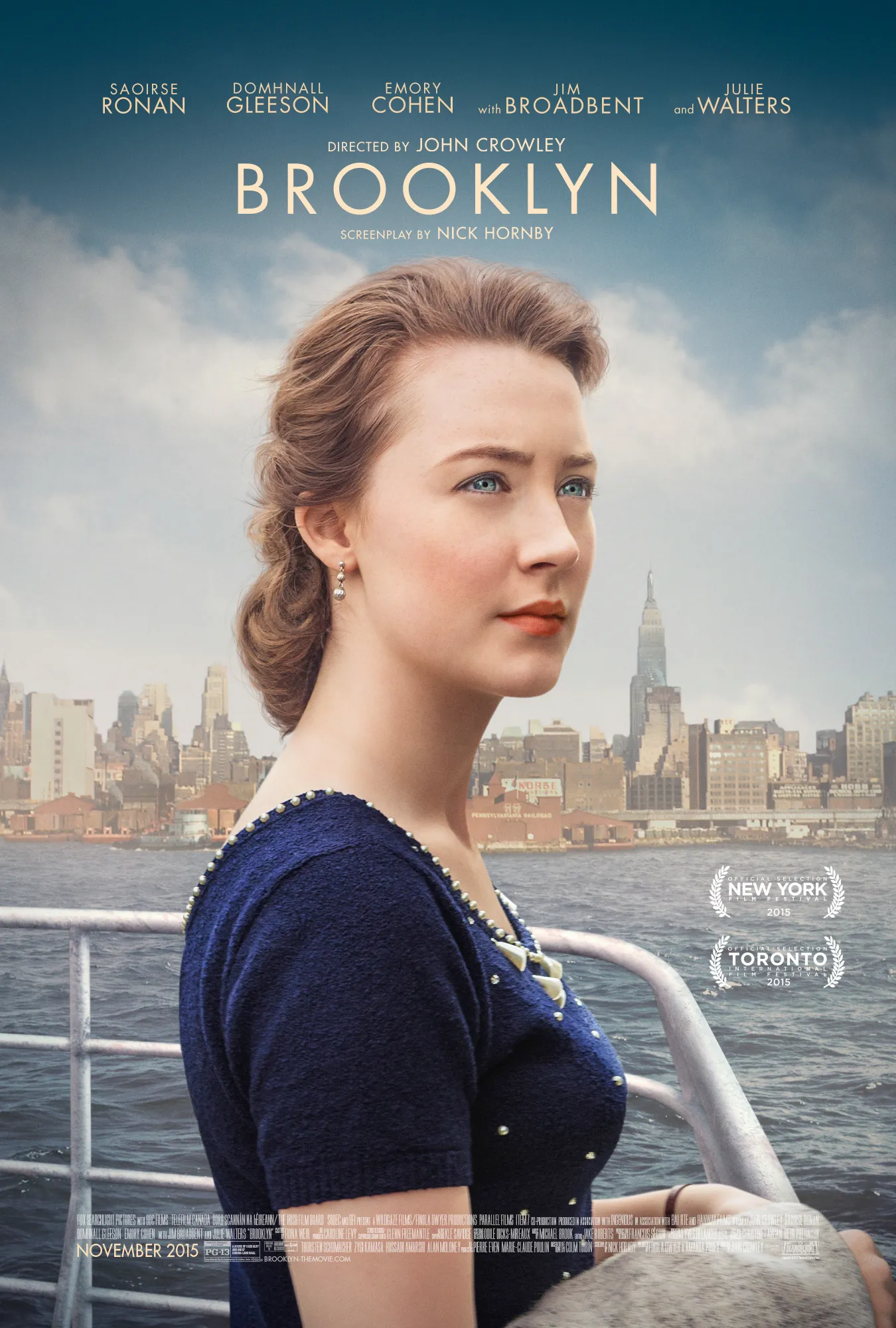Historical accuracy of Brooklyn

Historical accuracy of Brooklyn

Characters
Eilis Lacey (Saoirse Ronan)
Eilis is a fictional character, but her journey—leaving Ireland for opportunity, experiencing homesickness, adapting, and facing choices—is highly representative of many real Irish immigrant women in the 1950s.
Tony Fiorello (Emory Cohen)
A fictional character representing the established, often Catholic, ethnic communities (in this case, Italian-American) that Irish immigrants interacted and formed relationships with in Brooklyn.
Father Flood (Jim Broadbent)
A fictional character, but accurately represents the vital role real Catholic priests and parishes played in sponsoring Irish immigrants, finding them lodging and jobs, and providing community support.
Jim Farrell (Domhnall Gleeson)
A fictional character representing the life and potential future Eilis left behind in Ireland.
Mrs. Kehoe (Julie Walters)
A fictional character accurately representing the landladies (often Irish themselves) who ran boarding houses for young immigrant women, providing a structured and communal living environment.
Rose Lacey (Fiona Glascott)
A fictional character representing the family members left behind in Ireland and the sacrifices made to enable emigration.
More characters
Mary Lacey (Jane Brennan)
Fictional character representing the older generation in Ireland and the emotional impact of emigration on families.
Nancy (Eileen O'Higgins)
Fictional character representing peers and social life in Ireland.
Miss Fortini (Jessica Paré)
Fictional character representing workplace dynamics for immigrants.
Story
Economic emigration from Ireland in early 1950s
Accurately reflects the historical reality of significant emigration from Ireland due to economic stagnation and lack of opportunity, particularly for young people.
Sponsorship by Catholic priests/parishes
The system where priests in America would sponsor immigrants, arranging passage, housing, and employment, was a common and crucial facilitator for Irish immigration.
Transatlantic sea voyage experience
Portrays the conditions of ocean liner travel for immigrants in the 1950s, including shared cabins and the likelihood of seasickness, accurately.
Living in Irish boarding houses in Brooklyn
Boarding houses specifically for young Irish women, often run by landladies from the community and providing meals and rules, were a common feature of immigrant life.
Finding work in places like department stores
Retail positions, particularly in department stores, were accessible jobs for many young immigrant women arriving in cities like New York.
Intense homesickness of new immigrants
The film vividly and accurately portrays the profound sense of loneliness and longing for home that was a common emotional experience for immigrants adapting to a new country.
Assimilation process (fashion, social skills)
Eilis's gradual adoption of American fashion, makeup, and social confidence accurately reflects the assimilation process immigrants underwent.
Attending night classes for career advancement
Educational opportunities, like night school for skills such as bookkeeping, were pursued by immigrants seeking to improve their prospects.
Romance between Irish and Italian Americans
Intermingling and romance between different Catholic immigrant groups, like the Irish and Italians, was common in neighborhoods like Brooklyn.
Parish dances as primary social/dating venues
Church-sponsored dances were central social events in the 1950s, providing a supervised environment for young Catholic men and women to meet.
Return trip to Ireland due to family tragedy
Immigrants did travel back for significant family events like funerals, though permanent return migration was less common than depicted for dramatic tension in the film.
Difficulty choosing between Ireland and America
Accurately portrays the powerful emotional conflict many immigrants faced between loyalty to their homeland/family and the new life/opportunities found abroad.
Setting
Enniscorthy, Ireland (Early 1950s)
Accurately portrays the visual aesthetic, social constraints, and economic atmosphere of a small Irish town in the post-war era. (Partially filmed on location).
Brooklyn, New York (Early 1950s)
Effectively recreates the look and feel of Brooklyn neighborhoods (Irish, Italian), streetscapes, brownstones, and public spaces like Coney Island. (Mostly filmed in Montreal).
Transatlantic Ocean Liner
The shipboard scenes convincingly portray the environment of sea travel for immigrants during that period.
Irish Boarding House
The set design accurately reflects the communal living spaces, dining rooms, and bedrooms typical of boarding houses for young women at the time.
Department Store (Bartocci's)
Represents the type of upscale retail environment where Eilis finds work, reflecting 1950s store design and customer service expectations.
Fashion and Costume Design
Meticulously researched costumes accurately reflect the clothing styles of the early 1950s in both Ireland and America, highlighting Eilis's personal transformation.
Social Customs and Etiquette
Portrays period-appropriate social interactions, dating norms, dance hall etiquette, and expectations within the family and community accurately.
Post-War Atmosphere Contrast (Ireland/USA)
Effectively contrasts the constrained, somewhat muted atmosphere of post-war Ireland with the vibrant, optimistic, and economically booming post-war America.
